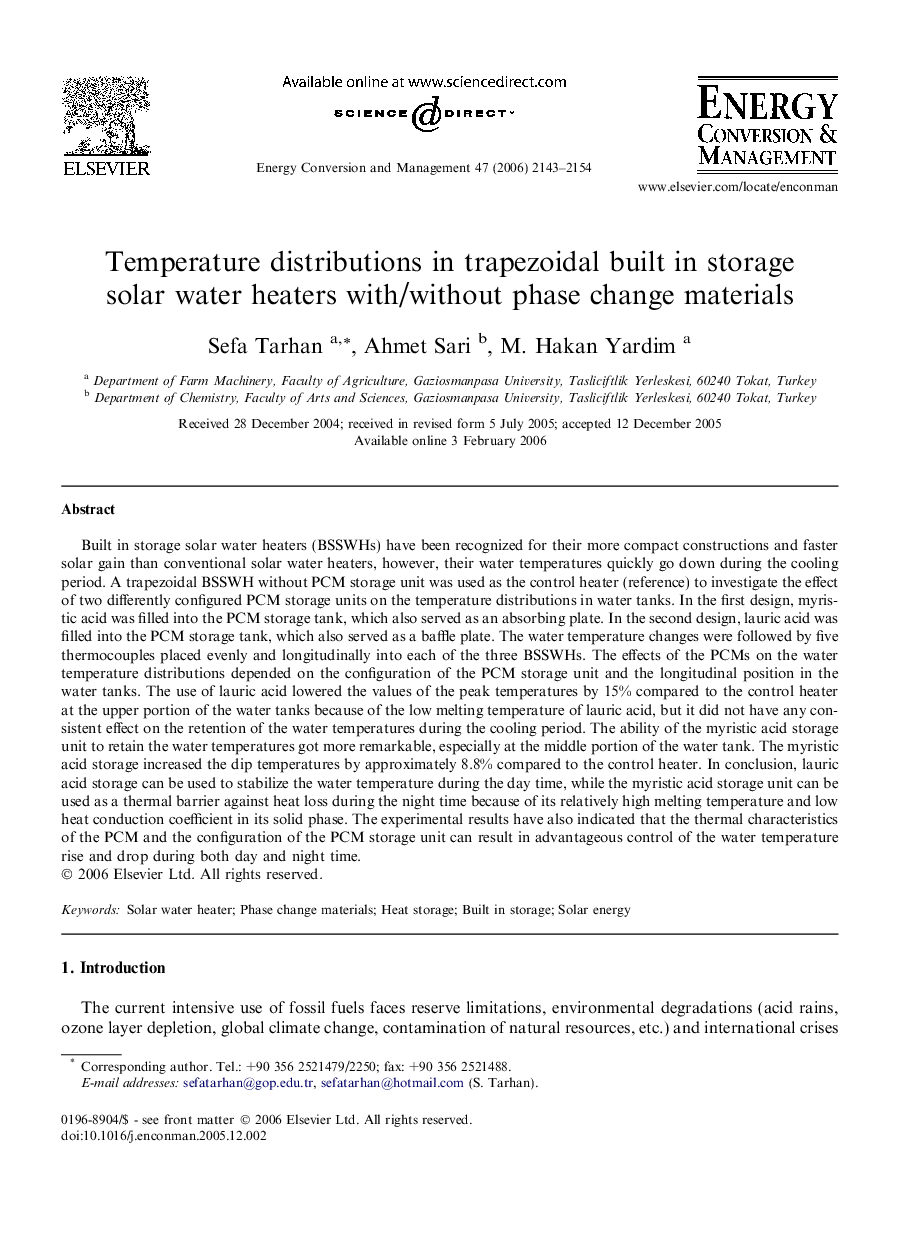| Article ID | Journal | Published Year | Pages | File Type |
|---|---|---|---|---|
| 773070 | Energy Conversion and Management | 2006 | 12 Pages |
Built in storage solar water heaters (BSSWHs) have been recognized for their more compact constructions and faster solar gain than conventional solar water heaters, however, their water temperatures quickly go down during the cooling period. A trapezoidal BSSWH without PCM storage unit was used as the control heater (reference) to investigate the effect of two differently configured PCM storage units on the temperature distributions in water tanks. In the first design, myristic acid was filled into the PCM storage tank, which also served as an absorbing plate. In the second design, lauric acid was filled into the PCM storage tank, which also served as a baffle plate. The water temperature changes were followed by five thermocouples placed evenly and longitudinally into each of the three BSSWHs. The effects of the PCMs on the water temperature distributions depended on the configuration of the PCM storage unit and the longitudinal position in the water tanks. The use of lauric acid lowered the values of the peak temperatures by 15% compared to the control heater at the upper portion of the water tanks because of the low melting temperature of lauric acid, but it did not have any consistent effect on the retention of the water temperatures during the cooling period. The ability of the myristic acid storage unit to retain the water temperatures got more remarkable, especially at the middle portion of the water tank. The myristic acid storage increased the dip temperatures by approximately 8.8% compared to the control heater. In conclusion, lauric acid storage can be used to stabilize the water temperature during the day time, while the myristic acid storage unit can be used as a thermal barrier against heat loss during the night time because of its relatively high melting temperature and low heat conduction coefficient in its solid phase. The experimental results have also indicated that the thermal characteristics of the PCM and the configuration of the PCM storage unit can result in advantageous control of the water temperature rise and drop during both day and night time.
